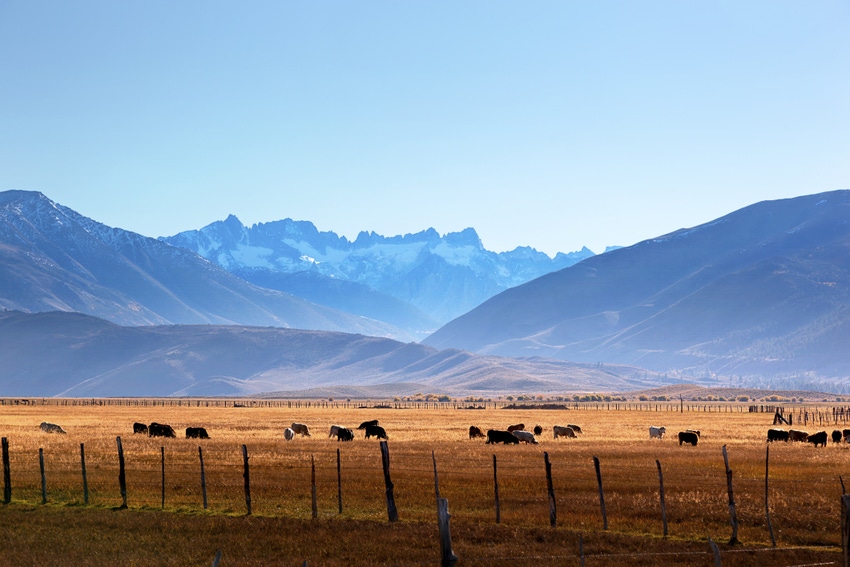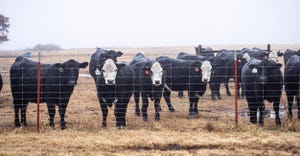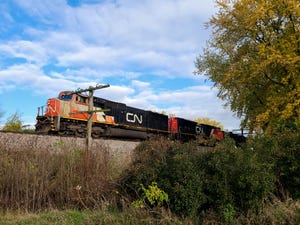USDA opens additional CRP acres for haying in drought areas
Farmers and ranchers in Montana and Dakotas can now hay and graze CRP wetland and buffer practices.

On Thursday, Agriculture Secretary Sonny Perdue announced that the U.S. Department of Agriculture is authorizing the use of additional Conservation Reserve Program (CRP) lands for emergency grazing and haying in and around portions of Montana, North Dakota and South Dakota affected by severe drought. USDA is adding the ability for farmers and ranchers in these areas to hay and graze CRP wetland and buffer practices.
“We are working to immediately address the dire straits facing drought-stricken farmers and ranchers,” Perdue said. “USDA is fully considering and authorizing any federal programs or related provisions we have available to meet the immediate needs of impacted producers.”
For CRP practices previously announced, including those authorized today, Perdue is allowing this emergency action during and after the primary nesting season, where local drought conditions warrant, in parts of Montana, North Dakota and South Dakota that have reached D2, or “severe,” drought level or greater based on the U.S. Drought Monitor. This includes counties with any part of their border located within 150 miles of authorized counties within the three states and may extend into Idaho, Iowa, Nebraska, Minnesota and Wyoming. All emergency grazing must end by Sept. 30, 2017, and emergency haying must end by Aug. 31, 2017.
The secretary said epic dry conditions -- as high as D4 drought in some areas -- coupled with an intense heatwave, have left pastures in poor or very poor condition resulting in the need for ranchers to, at best, supplement grain and hay and at worst, sell their herds.
“I am always amazed by the resilience of South Dakota ranchers, but this year’s devastating drought goes far beyond the challenges most producers have had to face in recent years. With many pastures in poor or very poor condition, I’m hopeful these added CRP acres will provide some degree of relief,” said Rep. Kristi Noem (R., S.D.), who urged USDA in June to release all CRP acres for haying. "I am sincerely grateful to Secretary Perdue and the USDA for hearing my concerns and offering the support South Dakota ranchers need right now."
"The conditions in the Great Plains this summer are some of the worst we’ve seen. After a harsh winter, hay was already in short supply, and with almost no moisture for months, our members in the upper Great Plains are hurting. A deteriorating feed supply has forced many ranchers to drive hundreds of miles to purchase hay, while others have already sold their herds," National Farmers Union (NFU) president Roger Johnson added. "NFU is grateful for the USDA’s immediate and ongoing action to offer meaningful assistance for farmers and ranchers in the affected areas. In the short term, emergency haying and grazing on CRP land will provide much-needed relief and, in the long term, will protect the viability of many of these operations."
Landowners interested in emergency haying or grazing of CRP acres should contact the Farm Service Agency (FSA) office and meet with the local Natural Resources Conservation Service (NRCS) staff to obtain a modified conservation plan to include emergency haying/grazing. Individual conservation plans will take into consideration wildlife needs. CRP participants are reminded that a certain percentage of fields must be left unhayed or ungrazed.
Additional information about the counties approved for emergency haying and grazing and the eligible CRP practices in this area is available at www.fsa.usda.gov/emergency-hayandgraze.
For more information on CRP emergency grazing and haying or other disaster assistance programs and loans, contact a local USDA Service Center, or visit http://offices.usda.gov.
About the Author(s)
You May Also Like




.png?width=300&auto=webp&quality=80&disable=upscale)
